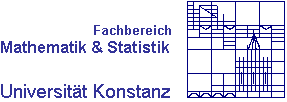

| |
 |
 |
|
|
Approximation of kinetic equations by moment systems
A standard mathematical model describing the flow of rarefied gases is given by the Boltzmann equation for the distribution function f of the gas particles. Physically relevant quantities are obtained as functionals of f in the form of velocity moments. Prominent examples, are mass, momentum and energy density which are velocity moments of order zero to two. Higher degree polynomial moments include the stress tensor and the energy flux. In the case of a slightly rarefied gas (i.e. if the Knudsen number is small), numerical simulations of the Boltzmann equation are very expensive because of the high dimensionality of the problem and the stiffness of the collision terms. In view of the fact that one is rather interested in functionals of f than in f itself, it is a natural idea to derive equations directly for the functionals. Multiplying the Boltzmann equation with velocity polynomials and integrating, we obtain a system of balance laws for the velocity moments - a so called moment system. However, this system is not closed because some terms still depend on the particle distribution function and not on its moments. This is the closure problem. A method to obtain a closure is the maximum entropy approach where the distribution function is chosen as maximizer of the Boltzmann-Shannon entropy subject to the linear constraints of prescribed moments. In this project, we analyze whether the maximum entropy approach is feasible in the case of the classical Boltzmann equation of gas dynamics.
|